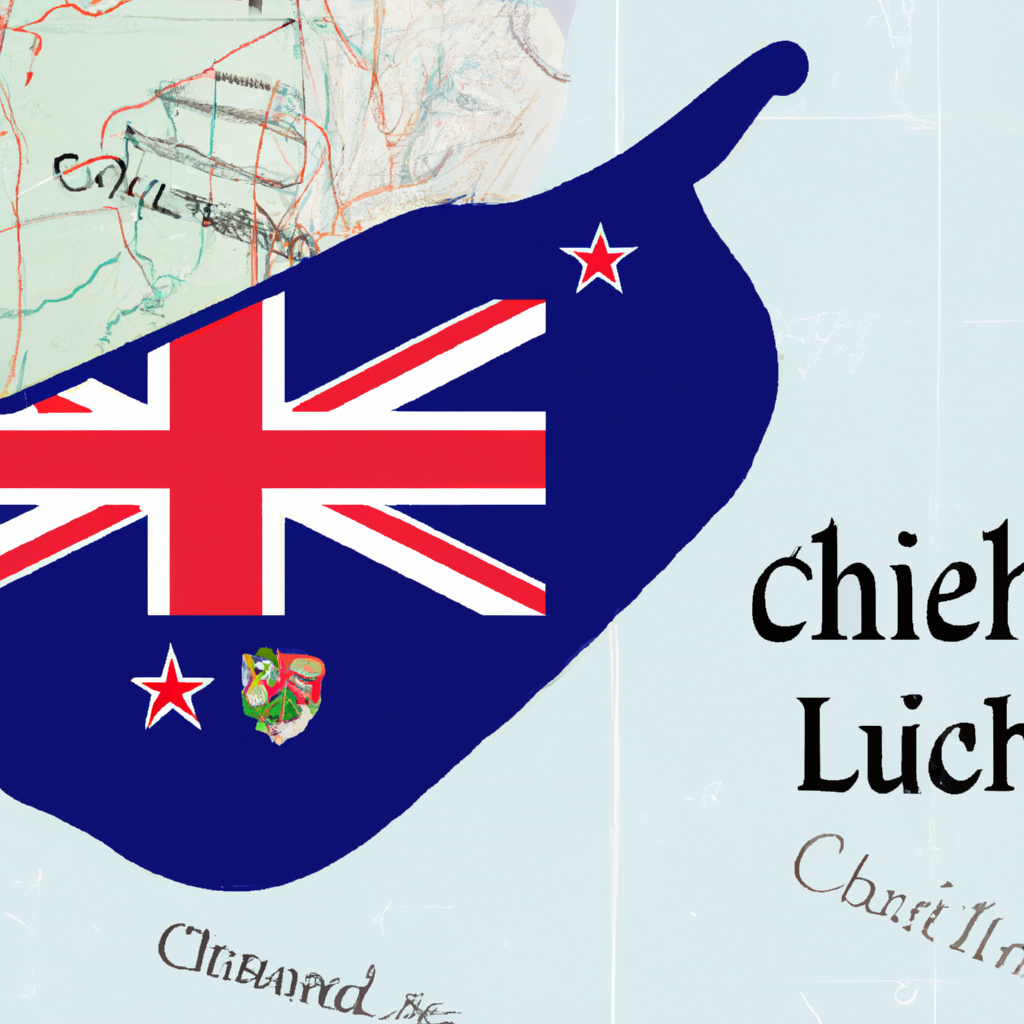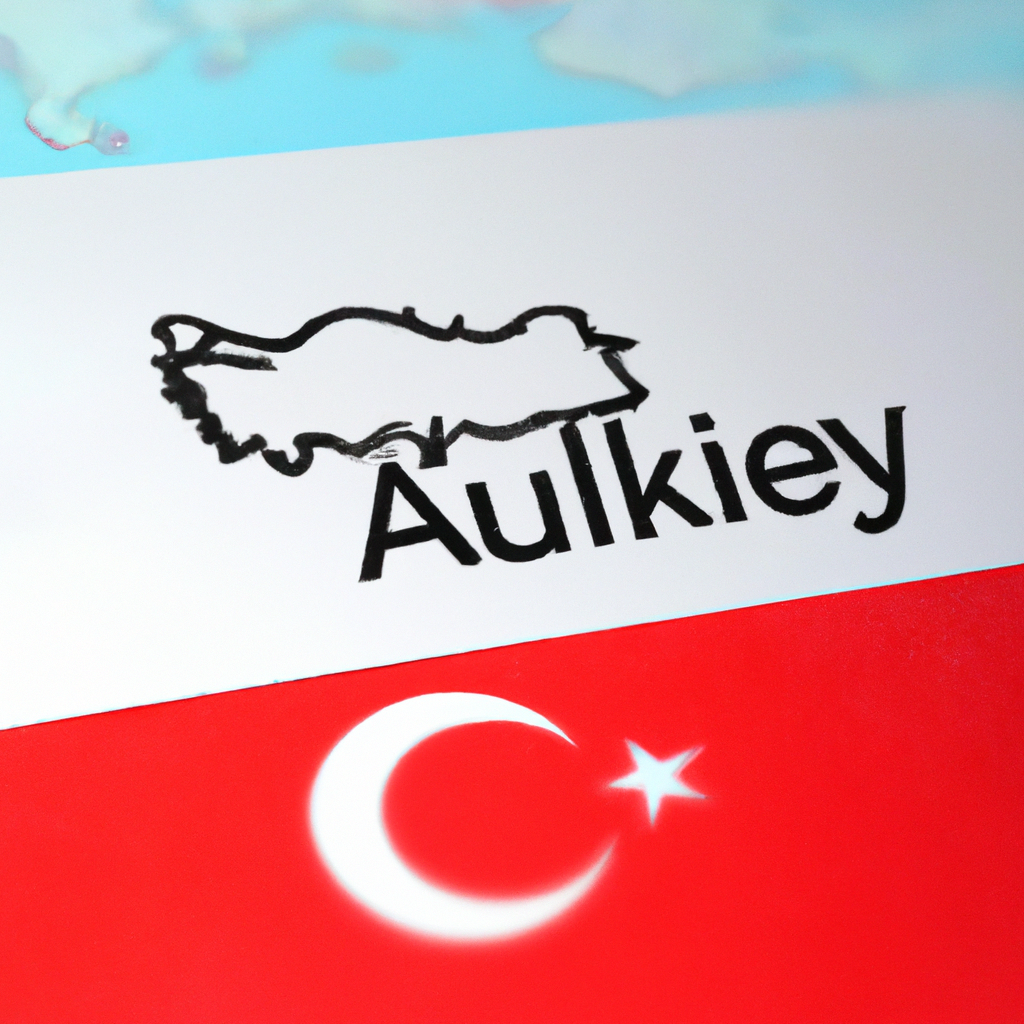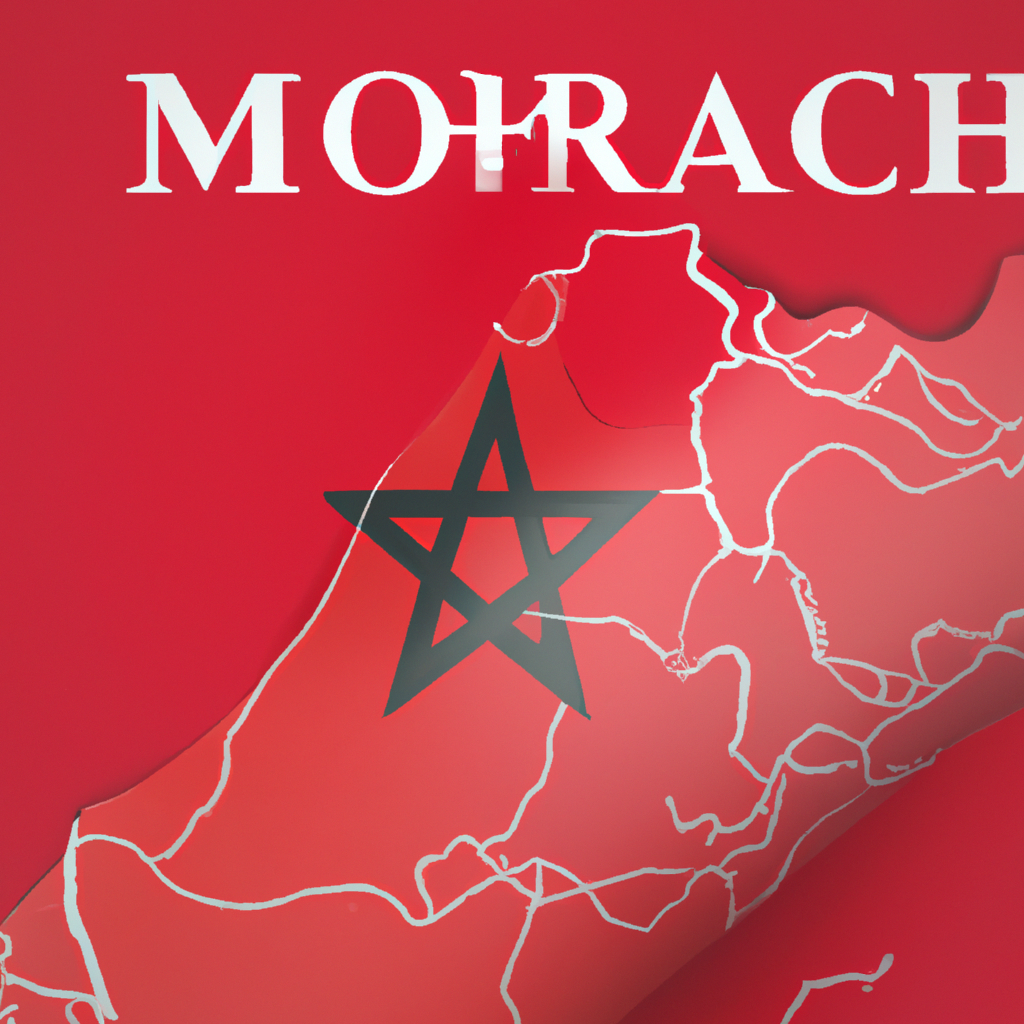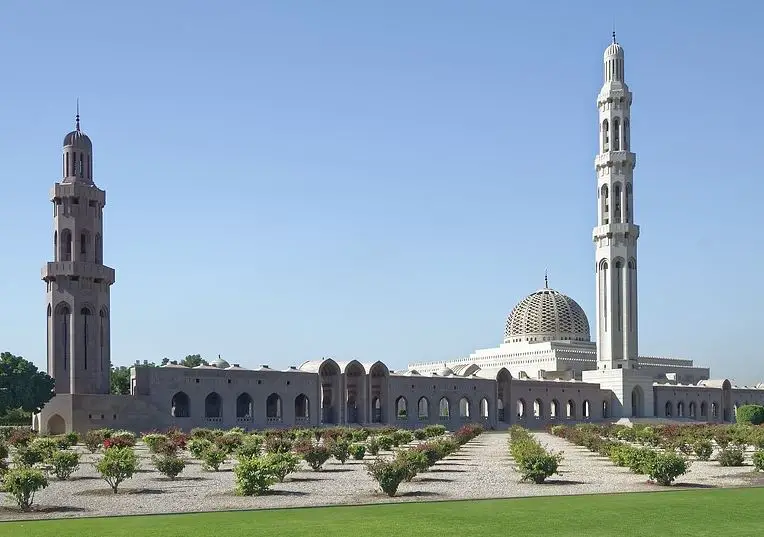Muscat, Oman: Interesting Facts,History, Things to do,Why to Visit
Post ByAdequate Travel
? Muscat, the capital of Oman, is known for its stunning natural beauty and traditional culture. From its picturesque sand dunes to its beautiful forts and palaces, Muscat offers a rich and diverse experience. With a long and vibrant history dating back centuries, Muscat is full of interesting stories, fascinating facts, and exciting things to do. In this blog, we will explore the history of Muscat, share some interesting facts and anecdotes, explore what to do and see while visiting, and the reasons why you should visit this wonderful city. Come along as we discover the charm and beauty of Muscat!
Oman is a country located in the Arabian Peninsula in Southwest Asia. It is bordered by the United Arab Emirates to the northwest, Saudi Arabia to the west, and Yemen to the southwest. The country has a rich history, with evidence of human settlement dating back to the Stone Age. Oman was once a major power in the Indian Ocean and controlled territories as far as East Africa.In modern times, Oman is known for its stable and peaceful government, as well as its economic diversification efforts. The country has made significant progress in developing its infrastructure, healthcare, and education systems. Oman is also known for its natural beauty, with stunning landscapes including deserts, mountains, and pristine beaches.The economy of Oman is heavily dependent on oil and gas exports, but the government has been making efforts to diversify the economy by investing in sectors such as tourism, logistics, and manufacturing. This diversification strategy aims to reduce the country's reliance on oil and create new job opportunities for its growing population.Culturally, Oman is known for its traditional values and strong Islamic heritage. The people of Oman are hospitable and welcoming, and the country has a reputation for being safe for tourists. The traditional dress for men is the dishdasha, while women wear a unique outfit called the abaya. Oman is also renowned for its traditional music, arts, and architecture.In recent years, Oman has been actively working towards enhancing its international relations and promoting peace in the region. It has played a significant role in mediating conflicts and promoting dialogue between rival nations. Oman is also a member of several regional and international organizations, including the United Nations and the Gulf Cooperation Council.Discover the untold stories behind oman unique facts, and historical treasures.
Interesting facts
The Sultanate of Oman
Oman, officially known as the Sultanate of Oman, is a country located in the Arabian Peninsula. Here are some interesting facts about this fascinating nation:
Geographical Diversity
Oman is known for its diverse geography, encompassing stunning coastlines, sprawling deserts, and majestic mountains. The country's coastline stretches for approximately 1,700 kilometers, boasting beautiful beaches and rich marine life. Inland, the Arabian Desert dominates the landscape with its vast sand dunes and arid expanses. Additionally, the Hajar Mountain range runs through the country, providing opportunities for hiking and breathtaking views.
Cultural Heritage
Oman has a rich cultural heritage that dates back thousands of years. The country has successfully preserved its traditional customs and values, making it a unique destination for cultural exploration. One notable aspect of Omani culture is its devotion to Islam, which is deeply integrated into daily life. Visitors can witness this by exploring the impressive mosques, traditional markets called souks, and attending traditional events like the camel races.
Hospitality and Friendliness
Omanis are known for their warm hospitality and friendliness towards visitors. They are genuinely welcoming and often go out of their way to make tourists feel at home. This hospitable nature is also reflected in the local cuisine, where guests are often treated to traditional Omani dishes and invited to experience an authentic taste of the country.
Historical Landmarks
Oman is home to numerous historical landmarks that showcase the nation's rich history. One impressive site is Nizwa Fort, which was built in the 17th century and served as the center of Omani culture and trade. Another significant landmark is the Bahla Fort, a UNESCO World Heritage Site that dates back to the pre-Islamic era. Moreover, the ancient city of Muscat features historic buildings and palaces, such as the Al Jalali and Al Mirani forts, which have stood for centuries.
Natural Wonders
Oman boasts several natural wonders that attract nature enthusiasts from around the world. One of the country's most famous attractions is the Wahiba Sands, a vast desert known for its towering sand dunes and captivating sunsets. The breathtaking Wadi Shab offers the opportunity to explore stunning canyons, swim in turquoise pools, and discover hidden caves. Additionally, the Khareef season in Salalah transforms the region into a lush paradise, with waterfalls, green pastures, and mist-covered mountains.
From museums to parks,oman tourist attractions offer something for everyone, making it a versatile destination for all type of tourists.History of Oman
Oman, officially known as the Sultanate of Oman, is a country located on the southeastern coast of the Arabian Peninsula. Its history dates back thousands of years, making it one of the oldest inhabited places in the Arabian Peninsula. Oman's history can be categorized into several key periods, each of which has shaped the country in its own unique way.Ancient Civilization (3000 BC - 2500 BC)
During this period, Oman witnessed the rise of several ancient civilizations, including the Magan civilization. The Magan civilization was known for its trade in copper and its advanced bronze technology. The ancient Omanis were accomplished sailors and traders, and their maritime trade routes extended to Mesopotamia and the Indus Valley.Islamic Influence (7th Century AD - 1507 AD)
In the 7th century AD, Oman was introduced to Islam, which played a significant role in shaping the country's cultural and political landscape. The arrival of Islam brought unity among various tribes and provided a foundation for a strong central authority. Oman became an important center for trade and spread Islamic teachings along the East African coast. The Portuguese arrived in 1507 and began a brutal military occupation that lasted for over a century.Omani Empire (1507 AD - 1856 AD)
During the 16th century, Omani tribes united under the Ya'aruba dynasty and expelled the Portuguese. Under the leadership of the Ya'aruba dynasty, Oman established a vast maritime empire that stretched from East Africa to the Indian subcontinent. The Omani Empire played a significant role in the international trade network, particularly in the Indian Ocean region. It also had a substantial influence on the development of cities in East Africa, such as Zanzibar and Mombasa.Modern Era and Sultan Qaboos (1970 AD - Present)
In 1970, Sultan Qaboos bin Said Al Said overthrew his father and embarked on a path of modernization and development. During his reign, Oman experienced significant social, economic, and political changes. Sultan Qaboos implemented reforms, diversified the economy, improved education and healthcare systems, and modernized infrastructure. Today, Oman is known for its peaceful foreign policy, stability, and efforts towards sustainable development.Examples of Omani History:
- The ancient Omani civilization's advanced bronze technology played a significant role in trade with Mesopotamia and the Indus Valley.- The spread of Islam in Oman in the 7th century led to cultural and political unity among various tribes.
- The Portuguese occupation of Oman lasted for more than a century, disrupting trade and governance.
- The Omani Empire, under the Ya'aruba dynasty, had a vast maritime empire that extended from East Africa to the Indian subcontinent.
- Sultan Qaboos's reign brought about significant modernization and development in Oman, including reforms in various sectors and infrastructure development.Exploring the rich heritage of historical sites in oman is a journey through time and culture.
Famous Things of Oman
Oman, a country located on the southeastern coast of the Arabian Peninsula, is known for its rich history, stunning landscapes, and cultural heritage. Here are some famous things that make Oman a unique destination:1. Sultan Qaboos Grand Mosque
One of the most iconic landmarks in Oman is the Sultan Qaboos Grand Mosque in Muscat. This magnificent mosque is known for its stunning architecture, intricate designs, and one of the world's largest hand-woven rugs. It is a popular tourist attraction, allowing visitors to admire the Islamic art and culture.2. Wahiba Sands
The Wahiba Sands is a vast desert region with towering sand dunes that stretch as far as the eye can see. This natural wonder attracts adventure enthusiasts who come here for camel rides, dune bashing, and camping under the starry night sky. It offers visitors a chance to experience the beauty and solitude of the Omani desert.3. Mutrah Souq
The Mutrah Souq is a traditional Arabian market located in the capital city of Muscat. This vibrant souq is famous for its narrow alleys filled with shops selling traditional Omani handicrafts, spices, textiles, and jewelry. It is a great place to immerse yourself in Omani culture and indulge in some retail therapy.4. Jebel Akhdar
Jebel Akhdar, also known as the "Green Mountain," is a part of the Al Hajar mountain range in Oman. It is renowned for its stunning terraced farms, picturesque villages, and cool climate. Visitors can enjoy hiking trails, explore ancient villages, and witness breathtaking views of the surrounding landscapes.5. Frankincense
Oman is famous for being the land of frankincense, a fragrant resin extracted from trees found in the Dhofar region. Frankincense has been a valuable commodity for centuries and was historically traded along the famous Incense Route. Visitors can learn about the history and production of frankincense, as well as purchase it as a unique souvenir.These famous things of Oman showcase the country's cultural diversity, natural beauty, and historical significance. Whether it's exploring stunning mosques or venturing into the vast deserts, Oman offers experiences that will leave a lasting impression on visitors.Discover some unique facts about oman that will leave you amaze and intrigue.Culture of Oman
Oman, located in the Arabian Peninsula, is known for its rich cultural heritage. The Omani people have deeply rooted traditions and customs that have been influenced by its long history and diverse influences from Arab, Persian, and African civilizations. Here are some key aspects of Omani culture:
1. Hospitality
Omanis are renowned for their warm hospitality and friendliness towards guests. It is customary for Omani families to welcome visitors with open arms and offer them tea, dates, and other traditional treats. The concept of "diwaniya," which refers to a gathering of friends and family at someone's house, also exemplifies their love for hospitality.
2. Dress
The traditional dress for Omani men is the dishdasha, a long white robe that is worn with a kumma (cap) and a mussar (headscarf). Women typically wear colorful abayas, which are long black robes, along with a sheila (headscarf) and sometimes a niqab (face veil). However, in urban areas, Western-style clothing is also commonly worn.
3. Cuisine
The Omani cuisine reflects the country's geographic location and history. Seafood, particularly fish and shrimps, is a staple in Omani cuisine. Majboos and shuwa are popular traditional dishes, often prepared for special occasions such as weddings or Eid. Dates are also a significant part of Omani cuisine, and they are used in various dishes and desserts.
4. Music and Folklore
Omani music and folklore play an essential role in preserving the cultural heritage of the country. Traditional Omani music often includes the use of oud (lute-like instrument), drums, and hand clapping. Folk dances like the Razha, characterized by synchronized movements and hand gestures, are performed during weddings, festivals, and other celebrations.
5. Frankincense
Frankincense, a fragrant resin obtained from Boswellia trees, has deep historical and cultural significance in Oman. It has been traded for centuries, and it is sometimes referred to as "the scent of Oman." Frankincense is used in traditional Omani ceremonies, religious rituals, and even in perfumes and incense.
6. Festivals and Celebrations
Omanis celebrate various cultural and religious festivals throughout the year. One of the most significant celebrations is the National Day on November 18th, which commemorates the country's independence. Other festivals include the Muscat Festival, Salalah Tourism Festival, and Eid al-Fitr, marking the end of Ramadan.
Overall, the culture of Oman is deeply rooted in traditions, hospitality, and a strong sense of community. These aspects, combined with the country's stunning landscapes and historical sites, make Oman a unique and fascinating destination.Immerse yourself in the local culture by exploring oman's top-rated tourist attractions.Cuisine of Oman
Omani cuisine is influenced by the Persian, Indian, African, and Arabian culinary traditions, resulting in a diverse and unique culinary experience. The traditional Omani cuisine reflects the country's history, culture, and geographical location. Here are some key aspects of Omani cuisine:
1. Staple Foods
Oman's staple foods typically include rice, wheat, and fish. Rice is a central component of many Omani dishes and is often served with a variety of meats, vegetables, and spices. Wheat-based products such as bread, porridge, and pastries are also prominent in Omani cuisine. As a coastal country, fish is abundant and forms an essential part of Omani meals.
2. Spices and Flavors
Omani cuisine is renowned for its use of aromatic spices, which add rich flavors to dishes. Common spices used in Omani cooking include cardamom, cinnamon, turmeric, saffron, black lime, and cloves. These spices are combined with local herbs like coriander, cumin, and fenugreek to create a distinct and flavorful taste.
3. Seafood
Given its extensive coastline, seafood plays a significant role in Omani cuisine. Traditional dishes such as Shuwa (slow-cooked lamb or goat) are often complemented with freshly caught fish or shellfish. Popular seafood dishes in Oman include Mashuai (roasted marinated fish or shrimp) and Samak Mashwi (grilled fish).
4. Arabian Coffee
Arabian coffee, also known as Qahwa, is an integral part of Omani hospitality and culture. It is a fragrant and strong coffee made from roasted coffee beans, cardamom, and sometimes saffron. Served in small cups, Omani coffee is traditionally accompanied by dates, halwa (a sweet Omani dessert), or other traditional snacks.
5. Desserts
Omani desserts are a delightful indulgence, often combining dates, honey, rosewater, and nuts. Halwa is a popular sweet dish made from ghee (clarified butter), sugar, rosewater, and a variety of flavors such as saffron, cardamom, or nuts. Other traditional Omani desserts include Ma'amoul (date-filled cookies), Sablé (sugar cookies), and Mishakak (skewered sweets).
Omani cuisine is a wonderful blend of flavors, spices, and cultural influences. It offers a diverse range of dishes that are sure to satisfy any palate. Whether you try the traditional Omani rice dishes, the aromatic grilled meats, or the tantalizing sweet treats, Omani cuisine provides a unique culinary experience.Explore the popular places in oman, and immerse yourself in its vibrant culture.1. Visit the Sultan Qaboos Grand Mosque
The Sultan Qaboos Grand Mosque is one of the most iconic landmarks in Oman. This magnificent mosque is an architectural masterpiece, adorned with beautiful chandeliers, intricate tilework, and a massive prayer hall that can accommodate thousands of worshippers. Visitors are welcome to explore the mosque, but it is important to dress modestly and adhere to the mosque's etiquette.
Example points:
- Marvel at the intricate designs of the mosque's exterior and interior.
- Admire the stunning chandelier, one of the largest in the world.
- Learn about Islamic culture and religion through guided tours available at the mosque.
- Take a peaceful stroll in the surrounding gardens and enjoy the serene atmosphere.
2. Explore the historic city of Nizwa
Nizwa, located in the heart of Oman, is known for its rich cultural heritage and historic significance. The city is home to the renowned Nizwa Fort, which offers panoramic views of the city and its surrounding palm groves. Visitors can also explore the bustling Nizwa Souq, where they can buy traditional handicrafts, spices, and souvenirs.
Example points:
- Climb to the top of Nizwa Fort for breathtaking views of the city.
- Discover the city's history through exhibits and displays at the Nizwa Fort Museum.
- Experience the vibrant atmosphere of Nizwa Souq and shop for unique Omani treasures.
- Visit nearby attractions like the ancient village of Birkat Al Mouz and the stunning Jebel Akhdar mountain range.
3. Go dune bashing in the Wahiba Sands
The Wahiba Sands is a vast desert located in the eastern part of Oman. Known for its mesmerizing sand dunes, it offers the perfect opportunity for an exhilarating dune bashing adventure. Visitors can ride in 4x4 vehicles driven by experienced drivers, who will navigate the sandy terrain and provide an adrenaline-packed experience.
Example points:
- Embark on an adrenaline-fueled dune bashing adventure in a 4x4 vehicle.
- Experience the thrill of sliding down steep sand dunes and conquering challenging terrains.
- Marvel at the stunning sunset or sunrise views over the vast desert landscape.
- Learn about the unique desert ecosystem and the traditional Bedouin way of life.
Climate of Oman
Oman has a desert climate, characterized by its extremely hot and dry conditions. The country experiences high temperatures throughout the year, with very little rainfall. Here are some key points about the climate of Oman:
1. Hot Summers
Oman's summers are scorching, with average temperatures ranging from 35°C to 45°C (95°F to 113°F). In some parts of the country, temperatures can even reach as high as 50°C (122°F) during the peak summer months. The summer season typically lasts from April to September.
2. Mild Winters
Winters in Oman are relatively cooler, but still warm compared to many other regions. Average temperatures during winter range from 15°C to 25°C (59°F to 77°F). The winter season lasts from November to March.
3. Limited Rainfall
Oman receives very little rainfall, particularly in the interior parts of the country. The coastal areas experience slightly higher rainfall than the inland regions. The rainy season occurs between December and April, but even during this period, the amount of rainfall is generally low.
4. Dry Climate
Oman's desert climate means that it is very dry, with low humidity levels. The lack of moisture in the air intensifies the feeling of heat during the summer months. The arid conditions make it vital for residents and tourists to stay hydrated and protect themselves from the sun.
5. Regional Variations
Oman's climate can vary slightly across different regions of the country. The coastal areas, particularly along the Arabian Sea, have a more moderate climate compared to the hot inland deserts. The southern Dhofar region experiences a unique monsoon climate, known as khareef, which brings cooler temperatures and heavy rainfall during the summer months.
Overall, Oman's climate is predominantly hot and arid, characterized by scorching summers, mild winters, limited rainfall, and dry conditions. It is important for residents and visitors to be prepared for the extreme heat and take necessary precautions.Exploring the city's diverse neighborhoods is one of the best ways to discover the best oman attractions, each with its own character and charm.Popular activities in Oman
Exploring Muscat
Muscat, the capital city of Oman, offers several popular activities for tourists. One of the most prominent attractions is the Sultan Qaboos Grand Mosque, which showcases stunning Islamic architecture and is open to non-Muslim visitors. Another must-visit location is the Mutrah Souq, a traditional market filled with an array of goods including spices, textiles, jewelry, and handicrafts. Tourists can also enjoy a stroll along the charming Corniche road that offers beautiful views of the city's coastline.
Visiting Wahiba Sands
Wahiba Sands is a vast desert located in central Oman, known for its stunning golden sand dunes. It is a popular destination for adventurous activities such as dune bashing, quad biking, and camel riding. Visitors can also experience the unique Bedouin culture by staying in a traditional desert camp, enjoying traditional food, and participating in cultural activities such as traditional music and dance performances.
Exploring Wadi Shab
Wadi Shab is a picturesque valley located in the Al Sharqiyah region of Oman. The wadi is known for its natural beauty, turquoise pools, and breathtaking waterfalls. Visitors can hike through the wadi, swim in the crystal-clear pools, and explore hidden caves. Wadi Shab is a popular spot for adventure lovers and nature enthusiasts, offering a refreshing escape from the bustling city life.
Dolphin Watching in Musandam
Musandam, a peninsula in northern Oman, is famously known for its dolphin population. Taking a dolphin watching tour is a popular activity for tourists visiting this region. Visitors can experience the thrill of watching dolphins swim alongside their boat in their natural habitat. The crystal-clear waters of Musandam are also ideal for snorkeling and diving, allowing tourists to explore the vibrant marine life and coral reefs.
Plan your trip with a list of the best things to do in oman, catering to all interests.Nightlife in Oman
Oman offers a unique and vibrant nightlife experience that combines traditional Omani culture with modern entertainment options. Here are some points to explore when it comes to experiencing the nightlife in Oman:
1. Muscat's Nightclubs and Bars
Muscat, the capital city of Oman, is home to several nightclubs and bars that cater to both locals and tourists. These venues offer a mix of international and local music, creating a lively atmosphere for dancing and socializing. Popular nightclubs in Muscat include the Al Ghazal Pub, Left Bank, and Zouk Music Club.
2. Traditional Arabian Music and Dance
For those looking for a more authentic experience, Oman offers various venues that showcase traditional Arabian music and dance. The Royal Opera House in Muscat hosts regular performances of classical Arabic music and dance, providing a glimpse into Omani heritage and culture.
3. Rooftop Bars and Lounge Areas
Many luxury hotels in Oman feature rooftop bars and lounge areas that provide breathtaking city views paired with sophisticated cocktails and a relaxed ambiance. These venues are perfect for enjoying a drink while taking in the beautiful skyline of cities like Muscat or Salalah.
4. Shisha Lounges
Oman is known for its shisha culture, and there are numerous shisha lounges scattered throughout the country. These lounges offer a wide variety of flavored tobacco options, providing a relaxing environment to enjoy a traditional Omani pastime.
5. Beachside Bars and Restaurants
Oman's stunning coastline provides perfect settings for beachside bars and restaurants. Whether along the shores of Muscat, Salalah, or Sur, these venues offer a mix of delicious cuisine, refreshing beverages, and mesmerizing views of the Arabian Sea.
6. Souq Evenings
Exploring the vibrant souqs (traditional markets) of Oman can also be a unique experience during evenings. Many souqs, such as Mutrah Souq in Muscat, come alive in the evening with food stalls, live music performances, and bustling crowds. It's an excellent opportunity to immerse yourself in local culture while enjoying the lively atmosphere.
In summary, Oman's nightlife offers a diverse range of options, from modern nightclubs and rooftop bars to traditional music and dance performances. Whether you prefer dancing the night away, sipping cocktails with stunning views, or immersing yourself in Omani culture, there is something for everyone to enjoy in Oman's vibrant nightlife scene.Discover the untold stories behind oman unique facts, and historical treasures.Reasons to Visit Oman
Oman is a diverse and beautiful country located in the Arabian Peninsula. It offers a unique blend of traditional Arabian culture and modern sophistication, making it an exciting destination for travelers. Here are several reasons why you should consider visiting Oman:
1. Natural Beauty
Oman boasts stunning landscapes with rugged mountains, vast deserts, and breathtaking coastline. The country is home to the majestic Hajar Mountains, including the highest peak, Jebel Shams. Visitors can also explore the mesmerizing Wahiba Sands, renowned for its golden dunes. Along the coastline, there are pristine beaches and crystal-clear waters that offer excellent snorkeling and diving opportunities.
2. Rich Heritage and Culture
Oman has a rich cultural heritage that reflects its long history. The country is known for its traditional markets, known as souks, where visitors can explore and purchase local handicrafts, spices, and souvenirs. There are also numerous forts and castles scattered across Oman, such as the Nizwa Fort and the Bahla Fort, that showcase the architectural marvels of the past.
3. Warm Hospitality
Omanis are known for their warm and friendly hospitality, ensuring a welcoming experience for visitors. The locals are eager to share their culture, traditions, and stories with tourists, making it a memorable and immersive travel experience.
4. Adventure Activities
For adventure enthusiasts, Oman offers a wide range of thrilling activities. Visitors can go hiking in the mountains, explore hidden caves, and take part in off-road dune bashing in the desert. The country is also ideal for camping, camel riding, and dolphin-watching tours.
5. Historical Sites
Oman has a wealth of historical sites that provide insights into its past. The ancient city of Nizwa, with its traditional architecture and bustling souk, has a rich history dating back centuries. Additionally, the UNESCO World Heritage Sites of Bahla and Bat are historical gems that shouldn't be missed.
6. Unique Wildlife
Oman is home to a diverse range of wildlife, including the Arabian Oryx, which is the national animal. Visitors can spot various bird species, reptiles, and even dolphins along the coast. The Arabian Sea is also known for its incredible marine life, making it a fantastic destination for diving and snorkeling.
Overall, Oman offers a multitude of attractions and experiences that make it a fascinating destination for travelers seeking adventure, cultural enrichment, and natural beauty. Whether you are interested in outdoor activities, historical sites, or immersing yourself in Arabian culture, Oman has something to offer for everyone.Whether you're a history buff or an adventure seeker, oman has an attraction for you. So, don't miss the chance to visit popular places in omanNumber of Days Required to Visit Oman
When planning a trip to Oman, the number of days required to explore the country thoroughly will depend on various factors such as the places you want to visit, the activities you have in mind, and your travel style. However, we can provide a general guideline based on the popular attractions and experiences that Oman has to offer.
1. Muscat (2-3 days)
Start your trip by exploring the capital city of Muscat. Spend a couple of days visiting iconic landmarks such as the Sultan Qaboos Grand Mosque, the Royal Opera House, and the Mutrah Corniche. Take a stroll through the vibrant Mutrah Souq, and enjoy the beautiful beaches of Qurum and Shatti Al Qurum.
2. Nizwa and Jebel Akhdar (1-2 days)
Head to Nizwa, the ancient capital of Oman, known for its historic forts and traditional markets. Explore the impressive Nizwa Fort and the bustling Nizwa Souq. From Nizwa, you can also take a day trip to Jebel Akhdar (Green Mountain) where you can enjoy stunning views, hike through terraced farms, and visit picturesque villages.
3. Wahiba Sands (1-2 days)
Experience the mesmerizing desert landscapes of Wahiba Sands, a vast expanse of golden dunes. Spend a night at a desert camp, try dune bashing, quad biking, or camel riding, and witness a beautiful sunset over the sand dunes. Depending on your preferences, you can choose to stay one or two nights in the desert.
4. Sur and the Coastal Areas (1-2 days)
Explore the coastal town of Sur, famous for its dhow shipyards and traditional boat building. Visit the dhow factory, the Sur Maritime Museum, and relax at the beautiful beaches of Ras Al Jinz or Ras Al Hadd. If you are interested in marine life, you can also go turtle watching at Ras Al Jinz Turtle Reserve.
5. Salalah and Dhofar Region (3-4 days)
If you have enough time, consider adding Salalah and the Dhofar region to your itinerary. Located in the southern part of Oman, Salalah offers a unique mix of beautiful beaches, stunning mountains, and fascinating cultural heritage. Explore the historic sites of Al-Baleed Archaeological Park, visit the blowholes at Mughsail Beach, and take a dip in the refreshing waters of Wadi Darbat.
Please note that the mentioned number of days for each destination is a general recommendation, and you can adjust it based on your preferences and available time. It's always a good idea to plan some buffer days to allow for flexibility and relaxation during your trip.
Step back in time as you visit the historical sites in oman, where the past comes alive.Significance of Oman
Oman is a country located in the Middle East, bordered by Saudi Arabia, Yemen, and the United Arab Emirates. It holds a significant position in the region due to various factors:1. Geopolitical Importance:Oman is strategically positioned at the entrance of the Persian Gulf, making it a crucial player in regional security and stability. Its diplomatic relations with different countries have enabled it to act as a mediator in various conflicts in the Middle East.2. Trade and Economy:The country's economy heavily relies on oil and gas exports, which constitute a major portion of its GDP. Oman is one of the top oil producers in the world, and its oil and gas industry play a critical role in global energy markets. Additionally, the government has been focusing on diversifying the economy by promoting sectors such as tourism, logistics, and manufacturing.3. Cultural and Historical Significance:Oman has a rich history that dates back thousands of years, with a vibrant cultural heritage. The country is known for its traditional architecture, forts, and ancient ruins. Its capital, Muscat, showcases a blend of modern development and preservation of traditional Omani culture.4. Regional Stability:Oman has maintained a reputation for being a stable and peaceful country, even amid the conflicts in the surrounding region. It has played a significant role in facilitating peace talks and negotiations between different factions in the Middle East, including hosting various international forums and conferences.5. Environmental Conservation:Oman is known for its diverse and unique ecosystems, including the Arabian Sea coastline, deserts, mountains, and coral reefs. The country has been actively committed to environmental conservation, taking initiatives to protect its natural resources and implement sustainable practices.6. Tourism and Cultural Heritage:Oman has been gaining popularity as a tourist destination due to its rich cultural heritage, stunning landscapes, and warm hospitality. The country offers a wide range of attractions, including historic sites, pristine beaches, traditional markets, and adventure activities like desert safaris and diving.Overall, Oman holds significant importance in terms of geopolitics, trade, economy, culture, regional stability, environmental conservation, and tourism. Its unique position and initiatives contribute to its influence not only in the Middle East but also on the global stage.Examples of individual points in paragraph form:Geopolitical Importance:
One example of Oman's geopolitical importance is its role in mediating the conflicts in Yemen. The country has been actively involved in facilitating negotiations between different factions to bring stability to its neighboring country.Trade and Economy:
Oman's oil and gas industry is a prime example of its significance in the global economy. The country's oil reserves and production levels have a direct impact on global energy markets and contribute to global oil supply.Cultural and Historical Significance:
The architectural marvels of Oman, such as the Sultan Qaboos Grand Mosque and the forts of Nizwa, stand as examples of the country's cultural and historical significance. These structures reflect the rich Omani heritage and attract tourists from around the world.Regional Stability:
Oman's efforts in facilitating peace talks between Iran and the United States serve as an example of its role in promoting regional stability. The country has hosted multiple rounds of negotiations, providing a neutral ground for diplomatic discussions.Environmental Conservation:
The creation of protected areas, like the Hawar Nature Reserve, is a testament to Oman's commitment to environmental conservation. These areas preserve the country's unique ecosystems and support wildlife conservation efforts.Tourism and Cultural Heritage:
The development of tourism infrastructure, such as luxury resorts in Musandam and the promotion of Omani traditional handicrafts, showcases Oman's focus on cultural preservation and boosting its tourism industry.From hidden gems to iconic landmarks, oman has something for every traveler's taste.Frequently Asked Questions about Oman
1. What is the capital city of Oman?
The capital city of Oman is Muscat. Muscat is located on the coast of the Gulf of Oman and it is the largest city in the country. It is known for its stunning architecture, beautiful beaches, and vibrant markets. Muscat is also home to several important landmarks, such as the Sultan Qaboos Grand Mosque and the Royal Opera House.
2. What is the official language of Oman?
The official language of Oman is Arabic. It is widely spoken and understood by the majority of the population. English is also commonly spoken, especially in urban areas and among professionals in the tourism industry. You will find that most signs and menus in tourist areas are in both Arabic and English.
3. What is the currency of Oman?
The currency of Oman is the Omani Rial (OMR). One Omani Rial is divided into 1,000 baisa. The currency is available in various denominations, including banknotes of 1, 5, 10, 20, and 50 Rials, as well as coins of various smaller denominations. It is recommended to exchange your currency at banks or exchange counters, as they offer more favorable rates compared to hotels or airports.
4. What is the best time to visit Oman?
The best time to visit Oman is during the winter months, from October to April, when the weather is mild and pleasant. Summers in Oman can be extremely hot, with temperatures exceeding 40 degrees Celsius (104 degrees Fahrenheit). However, if you are interested in outdoor activities such as desert camping or hiking in the mountains, it is best to visit during the cooler months of November to March.
5. Do I need a visa to visit Oman?
Most visitors to Oman require a visa to enter the country. However, citizens of certain countries, such as the United States, United Kingdom, Canada, Australia, and several European countries, may be eligible for a visa on arrival. It is recommended to check the visa requirements for your country before traveling and ensure that your passport has at least six months of validity remaining.
These are just a few frequently asked questions about Oman. If you have any additional inquiries, it is best to consult with the Omani embassy or consulate in your home country or visit the official tourism website of Oman for the most up-to-date and accurate information.Exploring the city's diverse neighborhoods is one of the best ways to discover the best oman attractions, each with its own character and charm.













